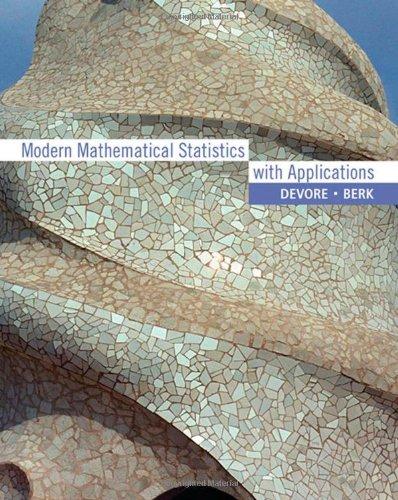94. The derailment of a freight train due to the catastrophic failure of a traction motor armature...
Question:
94. The derailment of a freight train due to the catastrophic failure of a traction motor armature bearing provided the impetus for a study reported in the article LocomotiveTraction MotorArmature Bearing Life Study (Lubricat. Engrg., Aug. 1997: 12—19).
A sample of 17 high-mileage traction motors was selected, and the amount of cone penetration
(mm/10) was determined both for the pinion bearing and for the commutator armature bearing, resulting in the following data:
Motor 1 2 3 4 5 6 Commutator 211 273 305 258 270 209 Pinion 226 278 259 244 273 236 Motor 7 8 9 10 11 12 Commutator 223 288 296 233 262 291 Pinion 290 287 315 242 288 242 Motor 13 14 15 16 17 Commutator 278 275 210 272 264 Pinion 278 208 281 274 268 Calculate an estimate of the population mean difference between penetration for the commutator armature bearing and penetration for the pinion bearing, and do so in a way that conveys information about the reliability and precision of the estimate. (Note:A normal probability plot validates the necessary normality assumption.) Would you say that the population mean difference has been precisely estimated?
Does it look as though population mean penetration differs for the two types of bearings? Explain.
Step by Step Answer:

Modern Mathematical Statistics With Applications
ISBN: 9780534404734
1st Edition
Authors: Jay L Devore





